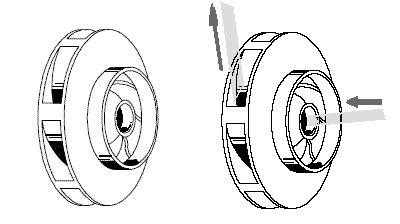Centrifugal Blower

An impeller is attached to a rotating shaft within a cylindrical housing.
Gas drawn into the housing near the centre, is then thrown towards the perimeter.
The imparted velocity of the gas causes a pressure rise and flow.
Multi-stage machines direct the gas back to the centre of the next stage.
| Typical Performance Envelope | ||||||||||||||||||||||||||||
|
||||||||||||||||||||||||||||
| Advantages | ||||||||||||||||||||||||||||
|
||||||||||||||||||||||||||||
| Disadvantages | ||||||||||||||||||||||||||||
|
||||||||||||||||||||||||||||
| Common Applications | ||||||||||||||||||||||||||||
